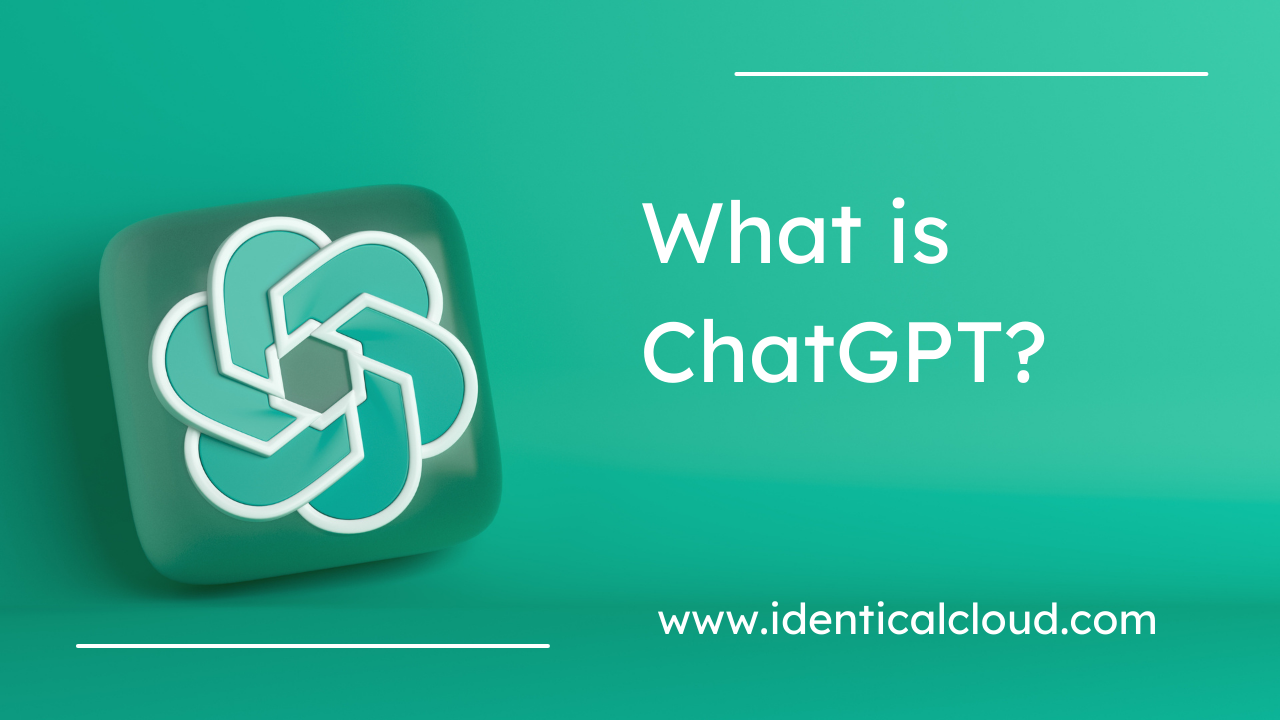
ChatGPT
In the realm of Artificial Intelligence (AI), ChatGPT stands as a remarkable innovation, representing the cutting-edge of natural language processing. Developed by OpenAI, ChatGPT is a state-of-the-art language model designed to engage in human-like conversations, providing insightful responses and practical assistance.
What is ChatGPT?
ChatGPT is a large language model (LLM) chatbot developed by OpenAI. It is a successor to InstructGPT, which is trained to follow an instruction in a prompt and provide a detailed response. ChatGPT is trained on a massive dataset of text and code, and can generate human-like conversational dialogue, answer questions, and compose various written content.
ChatGPT is still under development, but it has already been used for a variety of purposes, including:
- Customer service: ChatGPT can be used to provide customer support by answering questions and resolving issues.
- Education: ChatGPT can be used to provide personalized learning experiences by tailoring its responses to the individual learner’s needs.
- Entertainment: ChatGPT can be used to create games, stories, and other forms of interactive entertainment.
- Research: ChatGPT can be used to generate new ideas and insights by exploring large amounts of data.
ChatGPT is a powerful tool that has the potential to revolutionize the way we interact with computers. However, it is important to remember that ChatGPT is still under development, and it is not without its limitations. For example, ChatGPT can sometimes generate incorrect or misleading information, and it can be biased in its responses. It is important to use ChatGPT with caution and to be aware of its limitations.
How does ChatGPT work?
ChatGPT is a large language model (LLM) chatbot developed by OpenAI. It is trained on a massive dataset of text and code, and can generate human-like conversational dialogue, answer questions, and compose various written content.
ChatGPT works by using a technique called deep learning. Deep learning is a type of machine learning that uses artificial neural networks to learn from data. In the case of ChatGPT, the neural network is trained on a massive dataset of text and code. This dataset includes books, articles, code, and other forms of text.
When ChatGPT is given a prompt, it uses its neural network to generate a response. The response is generated by predicting the next word in a sequence of words. The neural network uses the data that it has been trained on to predict the next word that is most likely to occur in the sequence.
ChatGPT can generate human-like conversational dialogue because it has been trained on a massive dataset of text that includes conversations between humans. This allows ChatGPT to learn the patterns of human conversation and to generate responses that are similar to the way that humans would speak.
ChatGPT can answer questions because it has been trained on a massive dataset of text that includes factual information. This allows ChatGPT to access and process information from the real world through Google Search and keep its response consistent with search results.
ChatGPT can compose various written content because it has been trained on a massive dataset of text that includes a variety of different types of writing. This allows ChatGPT to learn the patterns of different types of writing and to generate content that is similar to the way that humans would write.
ChatGPT is constantly learning and improving. As ChatGPT is exposed to more data and feedback, it becomes better at generating text and answering questions.
What are the benefits of using ChatGPT?
ChatGPT is a powerful language model that has a wide range of potential benefits. Some of the most notable benefits include:
- ChatGPT can generate human-like conversational dialogue. This makes it a valuable tool for customer service, education, and entertainment. For example, ChatGPT can be used to provide customer support by answering questions and resolving issues. It can also be used to create personalized learning experiences by tailoring its responses to the individual learner’s needs. Additionally, ChatGPT can be used to create games, stories, and other forms of interactive entertainment.
- ChatGPT can answer questions. ChatGPT can access and process information from the real world through Google Search and keep its response consistent with search results. This makes it a valuable tool for research and fact-checking. For example, ChatGPT can be used to answer questions about a variety of topics, such as history, science, and current events.
- ChatGPT can compose various written content. This includes articles, social media posts, essays, code, and emails. This makes it a valuable tool for content creation and editing. For example, ChatGPT can be used to write blog posts, create marketing materials, or even generate code.
- ChatGPT is constantly learning and improving. As ChatGPT is exposed to more data and feedback, it becomes better at generating text and answering questions. This means that the benefits of using ChatGPT will only continue to grow in the future.
Overall, ChatGPT is a powerful tool with a wide range of potential benefits. It is still under development, but it has already been used for a variety of purposes. As ChatGPT continues to develop, it is likely that we will see even more benefits from this technology.
What are the limitations of using ChatGPT?
ChatGPT is a powerful language model, but it is still under development and has some limitations. Some of the most notable limitations include:
- ChatGPT can sometimes generate incorrect or misleading information. This is because ChatGPT is trained on a massive dataset of text and code, which includes some inaccurate or misleading information. For example, if ChatGPT is asked a question about a topic that it is not familiar with, it may generate a response that is incorrect or misleading.
- ChatGPT can be biased in its responses. This is because ChatGPT is trained on a dataset that reflects the biases of the real world. For example, if ChatGPT is asked a question about a topic that is associated with a particular gender or race, it may generate a response that is biased in favor of that gender or race.
- ChatGPT is not always able to understand complex or nuanced questions. This is because ChatGPT is still under development and does not have the same level of understanding as a human being. For example, if ChatGPT is asked a question that requires multiple steps to answer, it may not be able to provide a satisfactory response.
- ChatGPT can be repetitive and unoriginal. This is because ChatGPT is trained on a massive dataset of text, which includes a lot of repetition. As a result, ChatGPT may sometimes generate responses that are repetitive or unoriginal.
- ChatGPT can be easily fooled. This is because ChatGPT is trained on a massive dataset of text, which includes a lot of different ways to say the same thing. As a result, ChatGPT may sometimes be fooled by simple tricks, such as asking it a question in a different way.
Overall, ChatGPT is a powerful language model with a wide range of potential benefits. However, it is important to be aware of its limitations before using it. It is also important to remember that ChatGPT is still under development, and its capabilities are likely to improve in the future.
Is ChatGPT safe to use?
ChatGPT is generally considered to be safe to use. However, there are some potential risks associated with using ChatGPT, such as:
- ChatGPT can sometimes generate incorrect or misleading information. This is because ChatGPT is trained on a massive dataset of text and code, which includes some inaccurate or misleading information. It is important to verify the accuracy of any information that ChatGPT generates before using it.
- ChatGPT can be biased in its responses. This is because ChatGPT is trained on a dataset that reflects the biases of the real world. It is important to be aware of this bias and to critically evaluate any information that ChatGPT generates.
- ChatGPT can be used to generate harmful or offensive content. This is because ChatGPT is a powerful language model that can be used to generate any type of text. It is important to use ChatGPT responsibly and to avoid generating content that could be harmful or offensive to others.
Overall, ChatGPT is generally considered to be safe to use. However, it is important to be aware of the potential risks associated with using ChatGPT and to take steps to mitigate these risks.
Here are some tips for using ChatGPT safely:
- Do not use ChatGPT to generate information that is critical or sensitive. ChatGPT can sometimes generate incorrect or misleading information, and it is important to verify the accuracy of any information that ChatGPT generates before using it.
- Do not use ChatGPT to generate content that is harmful or offensive. ChatGPT is a powerful language model that can be used to generate any type of text. It is important to use ChatGPT responsibly and to avoid generating content that could be harmful or offensive to others.
- Be aware of the potential biases of ChatGPT. ChatGPT is trained on a dataset that reflects the biases of the real world. It is important to be aware of this bias and to critically evaluate any information that ChatGPT generates.
How can I use ChatGPT?
There are a few ways to use ChatGPT:
- You can use the ChatGPT web app. To do this, go to the ChatGPT website and create an account. Once you have created an account, you can start chatting with ChatGPT by typing your questions or prompts in the text box at the bottom of the page.
- You can use the ChatGPT API. The ChatGPT API allows you to use ChatGPT from your own code. To use the ChatGPT API, you will need to create an API key. Once you have created an API key, you can use it to call the ChatGPT API from your code.
- You can use the ChatGPT CLI. The ChatGPT CLI is a command-line tool that allows you to use ChatGPT from the command line. To use the ChatGPT CLI, you will need to install it first. Once you have installed the ChatGPT CLI, you can use it to chat with ChatGPT by typing the following command:
chatgptWhat are some of the creative things that ChatGPT can do?
ChatGPT can do many creative things. Here are a few examples:
- Generate creative writing. ChatGPT can generate poems, stories, and other forms of creative writing. You can give ChatGPT a prompt, such as a genre or a topic, and ChatGPT will generate text that fits that criteria.
- Write code. ChatGPT can write code in a variety of programming languages. You can give ChatGPT a prompt, such as a function or a program, and ChatGPT will generate code that fits that criteria.
- Translate languages. ChatGPT can translate text from one language to another. You can give ChatGPT a prompt, such as a sentence or a paragraph, and ChatGPT will generate text in the target language.
- Write different kinds of creative text formats. ChatGPT can write different kinds of creative text formats, such as poems, code, scripts, musical pieces, email, letters, etc. You can give ChatGPT a prompt, and ChatGPT will generate text in the desired format.
- Brainstorm ideas. ChatGPT can help you brainstorm ideas for projects, stories, or other creative endeavors. You can give ChatGPT a prompt, such as a topic or a problem, and ChatGPT will generate a list of ideas that you can use.
- Solve problems. ChatGPT can help you solve problems by generating text that provides solutions or insights. You can give ChatGPT a prompt, such as a question or a challenge, and ChatGPT will generate text that addresses the problem.
What are some of the business applications of ChatGPT?
ChatGPT has a wide range of potential business applications. Here are a few examples:
- Customer service: ChatGPT can be used to provide customer service by answering questions, resolving issues, and providing support. This can free up human customer service representatives to focus on more complex tasks.
- Sales and marketing: ChatGPT can be used to generate leads, qualify prospects, and close deals. ChatGPT can also be used to create personalized marketing campaigns and content.
- Product development: ChatGPT can be used to gather customer feedback, brainstorm new product ideas, and test product concepts. This can help businesses to develop products that meet the needs of their customers.
- Education: ChatGPT can be used to create interactive learning experiences, provide personalized tutoring, and grade assignments. ChatGPT can also be used to translate educational materials into different languages.
- Research and development: ChatGPT can be used to research new topics, generate hypotheses, and conduct experiments. ChatGPT can also be used to analyze data and identify trends.
- Content creation: ChatGPT can be used to write blog posts, create marketing materials, and generate other types of content. This can help businesses to save time and money on content creation.
- Virtual assistants: ChatGPT can be used to create virtual assistants that can perform a variety of tasks, such as scheduling appointments, making reservations, and providing customer service. Virtual assistants can help businesses to automate tasks and improve efficiency.
These are just a few of the business applications of ChatGPT. As ChatGPT continues to develop, it is likely that we will see even more business uses for this technology.
What are some of the ethical concerns about using ChatGPT?
ChatGPT is a powerful language model that can be used for a variety of purposes. However, there are also some ethical concerns about using this technology. Here are a few of the most notable ethical concerns:
- Bias: ChatGPT is trained on a massive dataset of text and code, which includes some biases. This means that ChatGPT can generate text that is biased, even if it is not intended to be. For example, ChatGPT may be more likely to generate text that is positive about certain groups of people or negative about others.
- Privacy: ChatGPT can access and process information from the real world through Google Search. This means that ChatGPT could potentially collect personal information about users without their knowledge or consent. For example, ChatGPT could use a user’s search history to generate targeted advertising or to create a profile of the user’s interests.
- Misinformation: ChatGPT can generate text that is factually incorrect or misleading. This could be used to spread misinformation or to manipulate people’s opinions. For example, ChatGPT could be used to generate fake news articles or to create social media posts that promote harmful or divisive content.
- Emotional manipulation: ChatGPT can be used to generate text that is designed to evoke emotional responses from users. This could be used to manipulate users into taking certain actions or to make them feel certain ways. For example, ChatGPT could be used to generate text that is designed to make users feel afraid or angry, or to make them feel like they need to buy something.
- Job displacement: ChatGPT could potentially displace some human jobs, such as customer service representatives and content writers. This could lead to unemployment and economic hardship for some people.
It is important to be aware of these ethical concerns before using ChatGPT. If you are concerned about the ethical implications of using ChatGPT, you can use it in a way that minimizes these risks. For example, you can be careful about the information you provide to ChatGPT, and you can be critical of the text that ChatGPT generates. You can also use ChatGPT in a way that is transparent and ethical, such as by disclosing to users that they are interacting with a language model.
What is the future of ChatGPT?
The future of ChatGPT is likely to be very bright. As AI research continues to advance, ChatGPT and other language models will become even more powerful and sophisticated. This will allow them to be used for a wider range of tasks, including:
- More complex and nuanced conversations: ChatGPT is already capable of holding conversations that are relatively natural and engaging. However, as it continues to develop, it is likely that it will be able to have conversations that are even more complex and nuanced. This could allow it to be used for tasks such as therapy and counseling, where it could provide support and advice to people who are struggling with difficult emotions or situations.
- More creative and original content: ChatGPT is already capable of generating creative content, such as poems, stories, and code. However, as it continues to develop, it is likely that it will be able to generate even more creative and original content. This could allow it to be used for tasks such as writing, music composition, and game design.
- More accurate and reliable information: ChatGPT is already capable of generating text that is factually accurate. However, as it continues to develop, it is likely that it will be able to generate even more accurate and reliable information. This could allow it to be used for tasks such as research, journalism, and education.
- More personalized and engaging experiences: ChatGPT is already capable of adapting its responses to the individual user. However, as it continues to develop, it is likely that it will be able to personalize its responses even more. This could allow it to be used for tasks such as customer service, education, and entertainment.
Overall, the future of ChatGPT is very promising. As AI research continues to advance, ChatGPT and other language models are likely to become even more powerful and sophisticated. This will allow them to be used for a wider range of tasks, and to have a positive impact on our lives in many ways.







